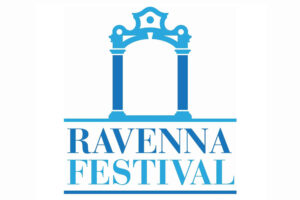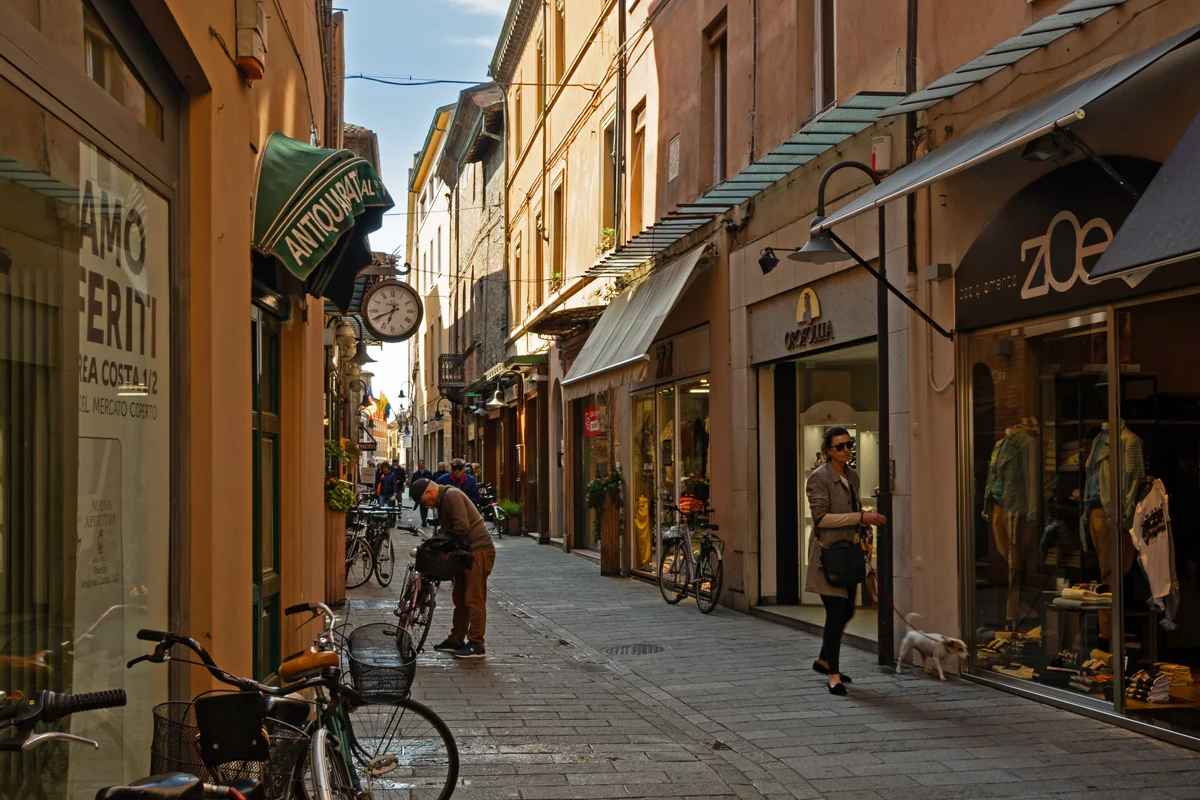This itinerary of taste and craftsmanship starts from Borgo San Rocco, just behind the ancient walls of Ravenna.
Recently elected “place of the heart” by the people of Ravenna, this network of houses, shops and religious buildings creates one of the city’s most authentic areas.
Despite its central position, you can easily reach it by car. In the area, you will find many parking lots, such as Tredici Giugno, Serra, Ricci and Segurini, which are perfect if you want to get to the beginning of this itinerary by walking along via Bassa del Pignataro, one of the most picturesque streets of the historical centre.
Borgo San Rocco is a very ancient settlement, curiously developing between two medieval gates. It has always hosted small associations and taverns, but has also been the seat of the fish market and also of a pasta factory. Today, it is a desirable residential and commercial neighbourhood, like a small village in the heart of Ravenna, where wine and piadina shops alternate with flower and shoe shops, and cafés.
The Street of Poets
If you cross Porta Sisi, one of the two historical gates to the centre of the city, you get on via Giuseppe Mazzini – recently pedestrianised and renovated – where it is extremely pleasant to walk among lively cafés and shops and to admire well-kept historical buildings such as Casa dei Polentani, Palazzo Lovatelli dal Corno and Palazzo Settecastelli or Palazzo Pignatta, right in front of the Basilica of Sant’Agata Maggiore, one of the many religious buildings located below street level.
Along the street, you will easily encounter installations in the form of bookstands inviting you to read texts and quotes, in many languages, which artists and writers from all over the world dedicated to Ravenna. This is the reason why Eraldo Baldini – writer and essayist, to whom we owe the project – named via Mazzini “the Street of Poets“.
Via Mazzini is full of nice spots and side streets inviting you to stop for a minute and to have a look at shop windows and art galleries. One of these side streets, the nice via Matteucci, leads to the entrance of the Classense Library – one of Italy’s most important libraries, definitely worth a detour – and to the TAMO Museum – All the Adventure of Mosaic.
The Zone of Silence
Walking towards the city centre, the view opens on Piazza Caduti per la Libertà, with its exotic green flowerbed at its centre and buildings dating back to the beginning of the 20th century all around it. The square looks like an open-air parlour, flanked on two sides by cafés and restaurants. Walk beside the 18th-century Palazzo della Provincia and you’ll get on via Corrado Ricci. Just a few steps later, on your right, Piazza San Francesco with all its beauty, prelude to Dante’s area, also called “Zone of Silence“. Here, a visit to Dante’s Tomb, the Quadrarco of Braccioforte, the Franciscan Cloisters – hosting Museo Dante and the Dantesque centre of Friars Minor conventual and finally to the Basilica of San Francesco is definitely worth it.
Along the street is the Library of Contemporary History, the historical palace of INA (National Insurance Association) on your left, the well known Ca’ de Ven, and then shops, cafés and bookshops. This and other nearby streets host every third weekend of the mont a picturesque antiques market.
At the end of via Ricci, we suggest you continue by turning left on via Raul Gardini, famous enterpreneur from Ravenna, and then on via Mentana. If you look up, you will see a reproduction of a mosaic of the Mausoleum of Galla Placidia, depicting two drinking doves. Also the street name has been realised in mosaic, as well as most of the ones in the historical centre.
The central squares
This nice little street paved with sampietrini and dotted with artisan workshops and restaurants leads to Piazza XX Settembre, that the people of Ravenna call Piazza dell’Aquila (lit. of the Eagle). It owes its name to the column at the centre of it, which has a crowned eagle on its top. This square is surrounded by palaces that were and are owned by noble families.
At the centre of the rear facade of Palazzo Merlato is a stunning archway with frescoes by Gaetano Savini, called “the overpass”. This nice gallery leads to the famous Piazza del Popolo – delimited by two Venetian columns, one with San Vitale and the other with Sant’Apollinare – which has always been the administrative and social heart of the city. The square is dotted with cafés and restaurants, where it is possible to taste the traditional dishes, from cappelletti to piadina. At Christmas time, the square is lightened up with colours and tastes with crafts markets and open-air concerts.







